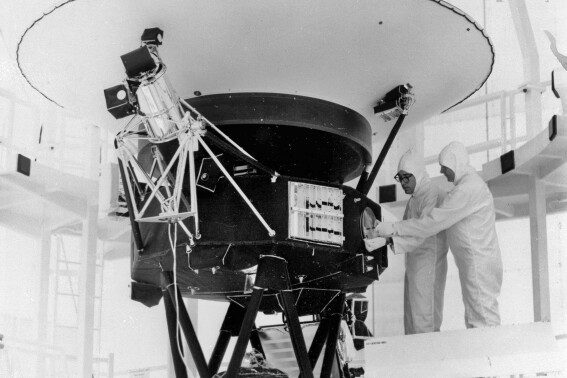Vice presidential candidates JD Vance and Tim Walz faced off in a debate on Tuesday night, hoping to shift the polls, which have remained stubbornly static in recent weeks. The debate was largely policy-focused, with a slew of claims on issues ranging from climate change and energy production to immigration's impact on housing prices.
Newsweek fact-checked several of their statements, examining the accuracy of assertions made by both politicians. The facts assessed in this article are analyzed in the order in which they appeared in the debate.
1. Vance casts doubt on carbon emissions' role in climate change.
Claim: Vance suggested that carbon emissions may not be the primary driver of climate change, saying, "This idea that carbon emissions drives all the climate change. Well, let's just say that's true, just for the sake of argument, so we're not arguing about weird science. Let's just say that's true."
Fact check: This statement implies some doubt about the role of carbon emissions in climate change.
But the overwhelming scientific consensus is that carbon emissions are the leading cause of global warming. Fossil fuels—coal, oil and gas—are responsible for over 75 percent of global greenhouse gas emissions, with carbon dioxide being the primary contributor to climate change, according to the United Nations.
The U.N.'s Intergovernmental Panel on Climate Change agrees, stating on its website: "The evidence is clear that carbon dioxide (CO2) is the main driver of climate change, even as other greenhouse gases and air pollutants also affect the climate."
Verdict: Misleading. Vance's statement downplays established science on the role of carbon emissions in climate change.
2. Vance: The U.S. is the "cleanest economy in the entire world."
Claim: Vance argued that the U.S. should produce more energy because "we're the cleanest economy in the entire world."
Fact check: This statement is not supported by international environmental data.
The United States ranked 17th in the world for environmental health in the 2024 Environmental Performance Index by Yale and Columbia universities, which measures air quality, sanitation and overall sustainability efforts.
In 2022, the U.S. emitted approximately 14.9 tons of CO2 per person, which is significantly higher than most other countries, according to Our World in Data. By comparison, China emitted about 8 tons per person that same year.
While the U.S. has made strides in clean energy, it is not the "cleanest" economy when compared with other nations.
Verdict: False. The U.S. is not the cleanest economy, ranking below other countries in several environmental health metrics.
3. Vance: Kamala Harris' policies have led to more energy production in China.
Claim: Vance claimed that Vice President Kamala Harris' policies have resulted in increased energy production in China, driving more manufacturing abroad and increasing global emissions.
"What have Kamala Harris' policies actually led to? More energy production in China, more manufacturing overseas, more doing business in some of the dirtiest parts of the entire world," he said.
Fact check: While China is a leading producer of clean energy technologies—it accounts for 80 percent of the global supply chain for solar power, for example—the Biden administration, including Harris, has actively worked to reduce reliance on China through measures like those in the Inflation Reduction Act (IRA).
The electric vehicle tax credits in the law were designed to shift the critical material supply chains away from China, incentivizing manufacturing on U.S. soil.
Under the Biden administration, companies have announced $910 billion for EV, battery, semiconductor and clean energy industries, among others.
Despite this, China will likely continue to dominate the clean energy space in the coming years.
Verdict: Requires context. China remains dominant in clean energy manufacturing, but the Biden administration is actively working to bring production back to the U.S.
4. Walz: The Inflation Reduction Act has created 200,000 jobs.
Claim: Walz said the IRA has created 200,000 jobs across the country, including in EV and solar panel manufacturing.
Fact check: While the IRA has spurred significant job growth in the clean energy sector, the 200,000 figure he cited comprises both jobs that have been created and those that companies have promised to create in the future.
Communications group Climate Power says the IRA has created some 330,000 jobs since it was passed into law—higher than Walz's figure.
However, other counts of new clean energy jobs show smaller numbers. For example, E2, a clean energy group, reports 112,000 jobs announced or created so far.
The U.S. Department of Energy found that 142,000 clean energy jobs were created in 2023. These numbers reflect significant growth but vary based on data collection methods. Additionally, some of these jobs are temporary, such as construction roles for new factories, while others are long-term positions in battery and solar panel production.
Verdict: Requires context. Walz's number is close to reported figures but comprises both existing and promised jobs, which should be clarified.
5. Walz: "The largest solar manufacturing plant in North America sits in Minnesota."
Claim: Walz said the largest solar manufacturing plant in North America is located in Minnesota.
Fact check: Walz's claim likely refers to Heliene, a Canadian solar panel company with a factory in Mountain Iron, Minnesota. In 2022, this facility became the second-largest crystalline silicon solar panel factory in the U.S., according to MPR News.
However, the largest crystalline silicon solar manufacturing plant is currently operated by Hanwha Qcells in Georgia.
Furthermore, First Solar, another U.S. company, manufactures the most panels in the U.S., according to the online comparison marketplace EnergySage.
Verdict: False. Minnesota is home to a large solar manufacturing facility, but it is not the largest in North America.
6. Vance: We've built only one nuclear facility in 40 years.
Claim: Vance claimed that the U.S. has built just one nuclear facility in the past 40 years.
"We haven't built a nuclear facility, I think one, in the past 40 years," he said.
Fact check: The U.S. built the vast majority of its nuclear reactors between 1967 and 1990, with no new reactors constructed from 1977 until 2013.
However, there have been some recent additions. The Watts Bar Unit 2 reactor in Tennessee came online in 2016, marking the nation's first new nuclear generation project in 20 years.
Since then, Vogtle Unit 3 in Georgia entered service in July 2023, and another reactor at the same facility, Vogtle Unit 4, began operating this past April.
These reactors mark the first new nuclear facilities in decades, but Vance's statement reflects the general stagnation in U.S. nuclear construction over the past 40 years.
Verdict: False. Although the U.S. has built only a small number of nuclear reactors in recent decades, the latest becoming operational in 2023 and 2024 after years of little construction, more than one new facility has been built in 40 years.
7. Walz: The U.S. is producing more oil and gas than ever.
Claim: Walz asserted that "we're producing more natural gas than we ever have."
Fact check: Walz's claim is largely accurate. In 2023, the U.S. reached record-high oil production, averaging 12.9 million barrels per day and peaking at 13.4 million barrels per day in December.
Natural gas production also hit a record in 2023, with 37.8 trillion cubic feet of dry gas produced.
However, projections from the U.S. Energy Information Administration indicate a slight dip in natural gas production for 2024 because of reduced producer activity in response to lower prices. Still, production is expected to rebound to record levels in 2025.
Verdict: True. The U.S. is currently producing record amounts of oil and natural gas, although natural gas output is expected to briefly decline in 2024.
9. Vance: Immigration is driving higher housing prices, a Fed study says.
Claim: Vance suggested that a Federal Reserve study links immigration, especially illegal immigration, to higher housing prices.
"Well, there's a Federal Reserve study that we're happy to share after the debate. We'll put it up on social media," he said. "Actually, that really drills down on the connection between increased levels of migration, especially illegal immigration, and higher housing prices."
He qualified his statement by saying that illegal immigrants were not the sole driver of price increases.
Fact check: Vance did not provide specifics about the study, but he was likely referring to comments made by Federal Reserve Governor Michelle Bowman in June. She said: "Given the current low inventory of affordable housing, the inflow of new immigrants to some geographic areas could result in upward pressure on rents, as additional housing supply may take time to materialize."
Vance may also have been referring to comments made by Federal Reserve Bank of Minneapolis President Neel Kashkari in a blog post. Kashkari said that immigration likely contributes to housing demand but that "the long-run effect of increased immigration on inflation is unclear."
Verdict: False. While Fed staffers have noted a possible link between immigration and house prices, this does not amount to a "study," and neither Bowman nor Kashkari made any mention of undocumented immigrants.
10. Walz: Minnesota is No. 1 for health care affordability, accessibility and quality.
Claim: During the debate, Walz said, "I come from a major health care state.... We understand health care. It's why we're ranked first on affordability and accessibility and quality of health care."
Fact check: Walz appears to be referencing a July 2024 WalletHub report that ranked Minnesota as the "best state" for health care overall, using a methodology that factored in cost, access and health outcomes. Minnesota scored particularly well for its affordability, ranking second in the country for health care costs, behind Iowa.
The report noted that Minnesota had the fourth-lowest out-of-pocket medical spending and the sixth-lowest average monthly insurance premiums.
But while the WalletHub report ranks Minnesota highly, other studies paint a different picture. For instance, Forbes ranked Minnesota No. 34 in its study of the most expensive states for health care, with North Carolina listed as the most expensive.
Additionally, U.S. News & World Report placed Minnesota at No. 6 for health care affordability in its rankings, showing that the state's position can vary depending on the methodology used.
Verdict: Misleading. Walz's claim that Minnesota ranks first in health care affordability is based on a specific report (WalletHub), but other sources provide different rankings, with Minnesota placing lower in some assessments.
While the state ranks highly in overall health care quality and access, it is not consistently ranked No. 1 in affordability across all studies.
Do you have a tip on a science story that Newsweek should be covering? Do you have a question about the election debate? Let us know via science@newsweek.com.
Disclaimer: The copyright of this article belongs to the original author. Reposting this article is solely for the purpose of information dissemination and does not constitute any investment advice. If there is any infringement, please contact us immediately. We will make corrections or deletions as necessary. Thank you.



